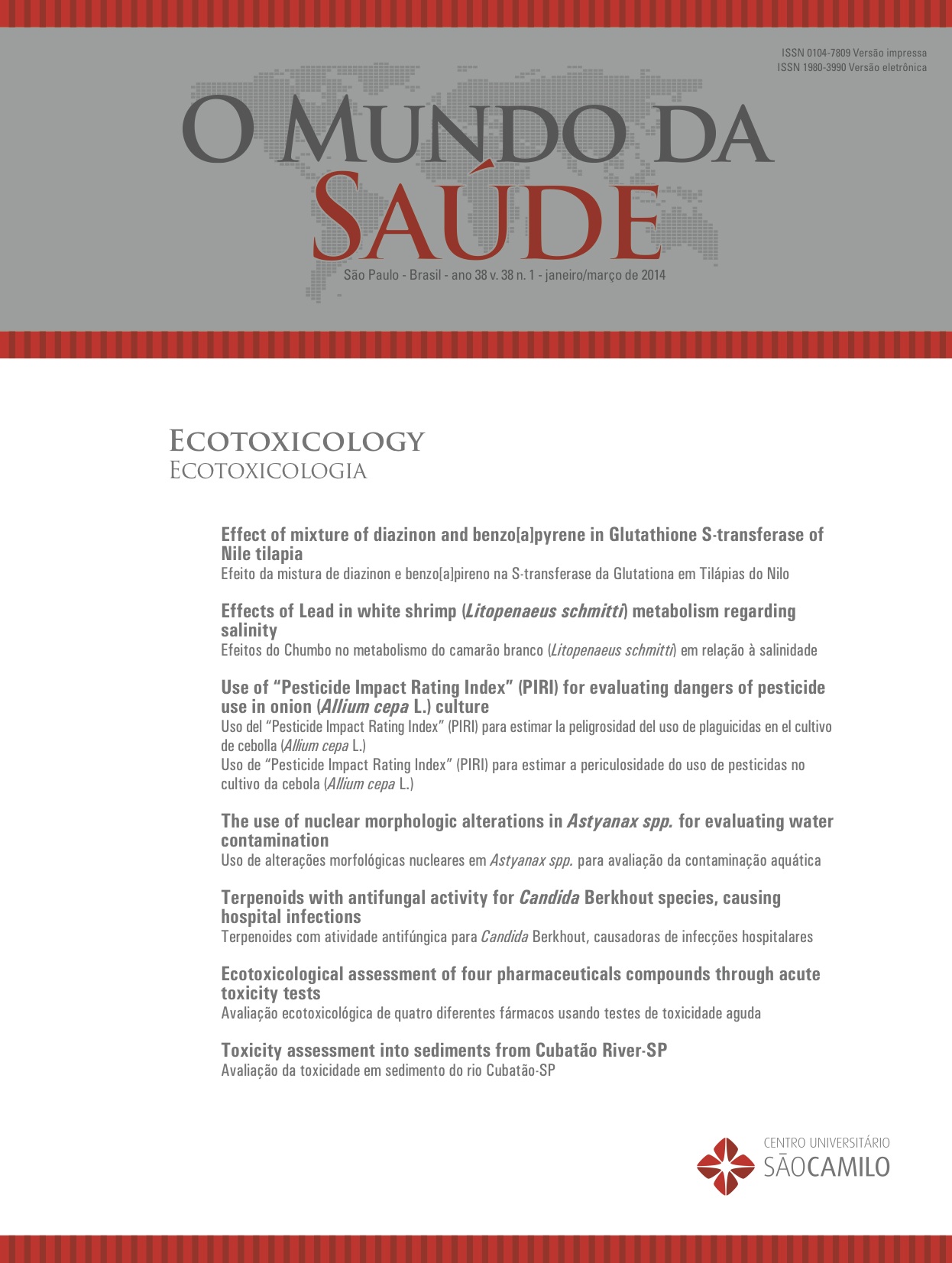Terpenoids with antifungal activity for Candida Berkhout species, causing hospital infections
DOI:
https://doi.org/10.15343/0104-7809.20143801040050Keywords:
Candida, Terpene, Cross InfectionAbstract
The increased incidence of fungi causing nosocomial infections is associated, in general, to employment and use of broadspectrum
antibiotic therapy in preterm in exposure time and stay in inpatient units. Terpenoids are a large group of chemicals
biosynthesized from mevalonate pathway, extracted from natural products. They have several biological activities well
defined among which antifungal ones. This study aimed to evaluate the antifungal activity of terpenoids against Candida
species causing nosocomial infections. Tests were performed to determine antifungal minimum inhibitory concentration
by microdilution plate 15 terpenoids against 11 species of the genus Candida. Of the 15 substances – terpenoids – tested
by the broth microdilution with the determination of Minimum Inhibitory Concentration, 9 (60%) showed antifungal activity
against Candida species and 6 (40%) showed no activity. These two substances 9 (22.2%) showed good antifungal
activity and 7 (77,8%) showed antifungal activity of moderate to weak. The most promising results were obtained with the
terpenoids (+) limonene with MIC of 46.87 μg/mL for C. krusei and C. guilliermondii and the terpenoid (-) limonene with
MIC of 46.87 μg/mL for C. krusei.






























